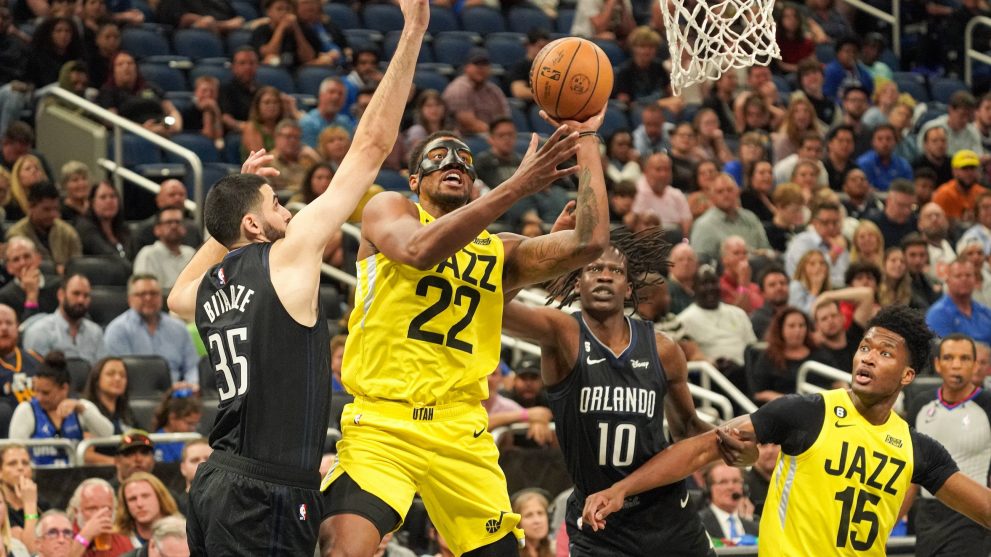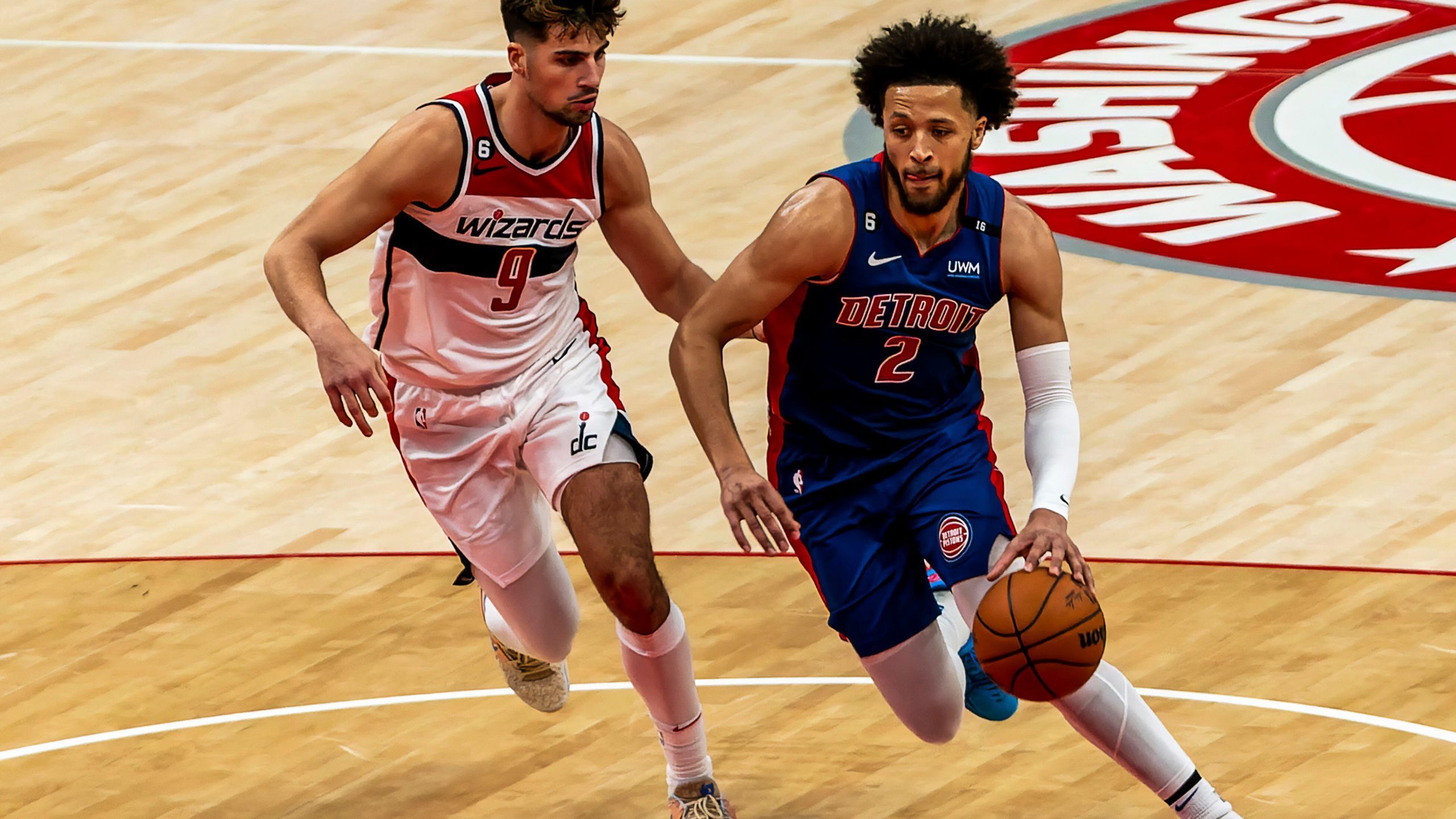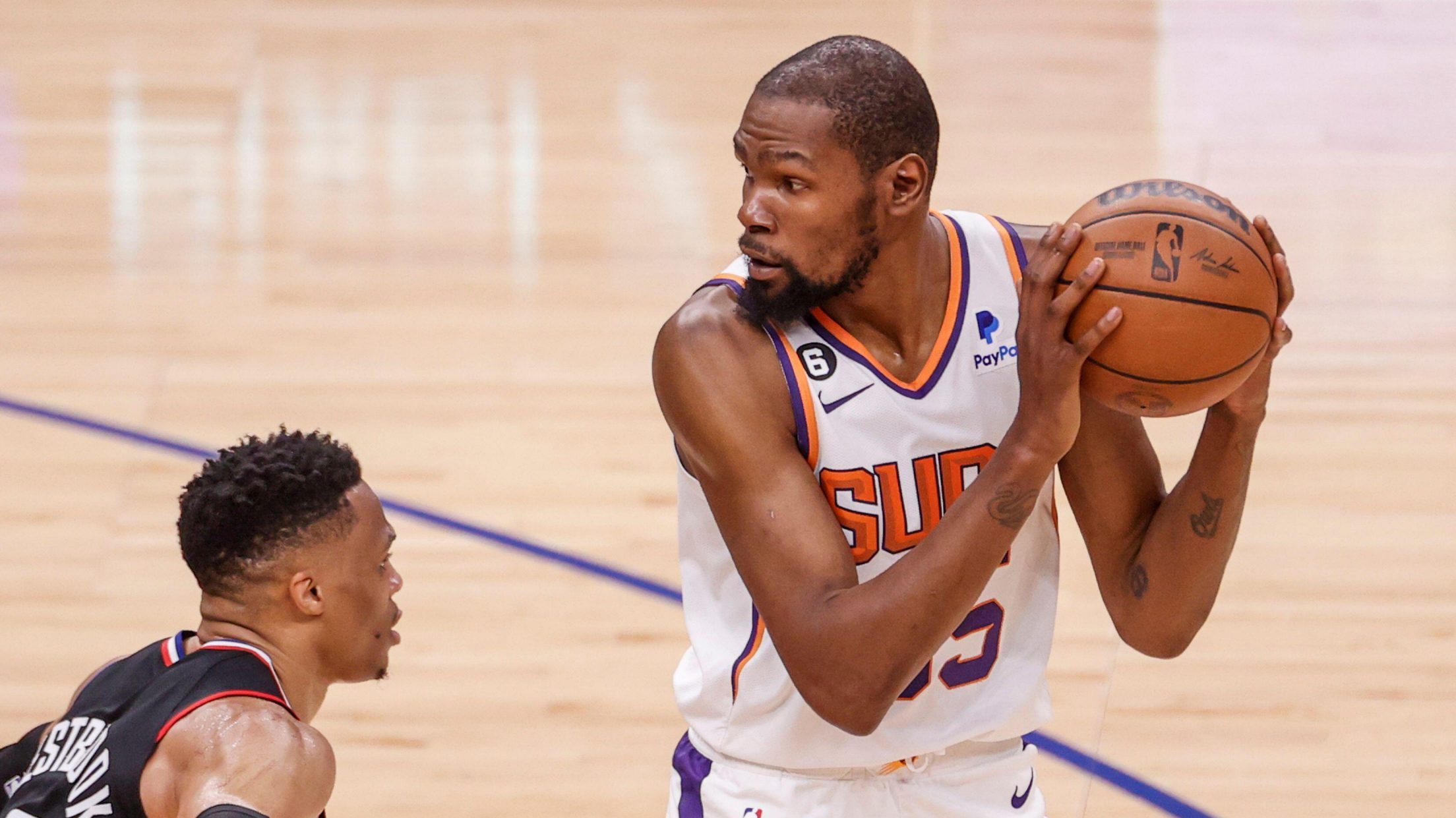No player has captivated me quite like Rudy Gay in my lifetime, and I strongly doubt one ever will in the same way moving forward.
To many, that is an odd statement; outside of his All-Rookie team selection in 2007, Gay never took home an award in the NBA.
He was never an All-Star, he didn’t lead the league in scoring, he never earned Player of the Week honors, he’s never been part of a team that won a playoff series… all of that is to say that he supersedes the typical modes of “captivation” in the NBA.
The Oklahoma City Thunder have waived Rudy Gay, sources tell @TheAthletic @Stadium.
— Shams Charania (@ShamsCharania) July 20, 2023
In his 17 years of professional basketball, 19 if we’re including his two seasons at UConn (the majority of my time on this planet), I’ve learned an immense amount about the game, myself, and life.
After Wednesday’s move by the Oklahoma City Thunder to waive Gay, it only feels right to rattle off the significance of Gay on and off the hardwood.
Highlights are Sick
Feats of athleticism and grandeur aren’t the end-all, be-all of basketball, but as a casual fan first getting into the game, it can play such a significant part of initial attraction.
If you played NBA 2k14, you’d know that Rudy Gay had some of the most game-breaking animations the franchise has ever seen. A hair of open space, a jab and go, and holding down the square button was a near guaranteed cradle or tomahawk jam over whatever sorry sap was waiting in the lane.
He did that in real life!!!
8.2% of Gay’s total field goal attempts in the league have been dunks, 1,050 slams in all their glory. After becoming a full-time starter in 2007 with the Grizzlies, he went on to dunk 524 times over the next five seasons through 2011-12, finishing top-11 in total dunks four times. Point-blank period, he’s one of the great in-game dunkers of his generation and should be mentioned as such accordingly.
I had an odd path to basketball, the only sport I really never played organized. I learned the game through 2K at first, falling in love with players and skillsets through the screen. The high-flying theatrics of Rudy Gay along with the shot-making ability, the length, the blend of height and defensive potential… everything about him in that game rocked.
And then I finally looked up his highlights, a sort of “You can’t realllllly be like this in real life” line of questioning. Was he the same level of breaking Xbox mechanics on court? Not quite, but 2k14 Rudy made Jordan look like he was back on JV to be fair.
I didn’t know that basketball could be like that, which sounds wild as someone who grew up in Cleveland. I took LeBron James for granted, drafted right when I started first grade.
20 years ago today, LeBron James was drafted 1st overall in the 2003 NBA Draft 👑 pic.twitter.com/5P7AYOfNjt
— LeBron Muse (@BronMuse) June 26, 2023
I’m not entirely sure why it took me until my mid-teens to understand and appreciate the beauty, the finesse, the power, and the individuality in basketball, but I do know that Rudy Gay was the player who showed me that, and in turn made me fall in love with basketball.
From there, I started watching the 2014 NBA Playoffs. I watched Paul George dunk on Birdman in the Conference Finals. I had my eyes opened to how great team defense could be through the lens of that Pacers team. The Heat showed me star power, and then the Spurs in turn opened the door for being wowed by some of the best ball movement and connectivity that have graced this earth.
I became a casual fan, loving the TNT showdowns and following storylines throughout the season even if I didn’t have time to fully invest. Basketball was always a fun escape, a place where I didn’t worry about winning and losing, just enjoying the ride.
Sports were not fun for me coming up; they were something I did for a myriad of reasons, many of them wrong, especially as I got older. I tried parlaying that into a pro boxing career and your body has a funny way of telling you when something just isn’t gonna happen.
A sizable heart injury and being told “you could die next time you go for a run” by my doctor due to overtraining for a fight, and the culmination of wear-and-tear from years of weight cutting and strain.
A year and a half of rehab, starting with bedrest, followed. Everything I’d worked for and known kinda just came crashing down in an instant for me. I had no idea how to process or handle that in my early twenties.
I thought I was on this path, and it evaporated. My wall was lined with motivational quotes, lyrics, goal charts; everything reminded me of what I’d been working towards.
So, I tore my walls down, moved my TV into my bedroom, and decided in 2017 that I was buying NBA League Pass for the Indiana Pacers so I could watch all their games. That evolved into the full version of league pass by mid-year, and I went from 3-to-4 games a week to watching 3-to-4 games a night.
And now, here we are in 2023, and I’m obsessed with the complexities of footwork, positioning on the defensive end, how an offense sets up and diverts attention to toy with a defense’s principles.
Jakob Poeltl is one of the best screeners in the NBA. Does great stuff as a DHO operator. So good at creating space for the ballhandler
Great at flipping, subtle as a sealer (who's to say if it's legal at times)
Like just the little nuance in taking that back step to deter Suggs pic.twitter.com/Yh1idSUTLB— Mark Schindler (@MG_Schindler) October 21, 2021
Point being, I found initial attraction in the game through pop and flair, and then found a love and passion for hoops in a sort of butterfly effect path outwards from there.
I’m not intending to say Rudy was a failure as a player in the slightest, his longevity and effectiveness for as long as he’s played is wild to comprehend. Rather, I aim to say that he’s someone I always admired, especially as my life went how it did. I always stood up for Rudy in conversations about efficiency or where he fell short, because as naïve as it sounds, I saw some of myself in that.
Skill was never a problem for me, but figuring out all the nuances was a struggle. So, seeing how he eventually rewrote some of those narratives after a significant injury, yeahhhh I was hooked for life as a fan.
It’s Hard to be a Star and That’s OK!
Gay finished at or above league average true-shooting (gauge of efficiency) in six of his 17 seasons, one of the larger reasons for detraction of his play in discourse.
There was a story from his time in Toronto that Gay banned stat sheets in the locker room, explained as wanting focus on winning as a team and not individual stats.
Rudy Gay bans stat sheets from #Raptors' post-game locker room #rtz http://t.co/lYUDIE95ys pic.twitter.com/F5600avY4F
— HoopsRant (@HoopsRantBlog) November 26, 2013
He did a lot of star things (shooting off the dribble a lot, scoring in volume, dunking, playing aesthetically) without having the consistent efficacy to quite crack star level.
There’s a tendency in the NBA and basketball at large to discount the imperfect; if you don’t fit the prototypical mold of what a title contender wants, needs, or should idealize, your game is not as valuable. There is some truth to that. In analysis, seeking out the most effective and impactful skills and players is meaningful. It’s important. But, in the actual enjoyment of the game, and also in understanding the game further, I find it so important to value the imperfect.
I don’t really think I understood the difficulty of finding a role in basketball, changing habits, and reinventing yourself until I saw Rudy Gay do it.
Coming off of an Achilles injury during his age 30 season in 2016-17, Gay was a free agent. He was still sought after, but there were sizable questions… how much of his athletic pop would remain? Could he tamp down his role in a new environment? How could he impact winning at a higher level and would he be able to evolve his game?
After a torn Achilles and at 33 years old
2K13 Rudy Gay returns https://t.co/7aP9OrMefI— Dom2K 🌊🏖 (@Dom_2k) January 13, 2020
It took some time, but Gay developed and molded himself into one of the better bench forwards in the league with the San Antonio Spurs. After shaking off injury rust and getting back into form, Gay bumped up his three point attempt rate every season in Texas while dipping into the lowest usage of his career since his rookie year.
He improved as a defender. He hit the glass at a career rate. He rounded out his game to become a more stable player.
That all seems minute in the grand scheme, you’re supposed to get better at things over time, but considering Gay had been a star type player since his days at Archbishop Spalding in the early 2000s, it means something more.
It’s difficult to go away from what’s made you you for nearly two decades and evolve into a new skill set while accepting a smaller role. That isn’t easy, it’s admirable.
In parsing through some of the inefficiencies, shortcomings, and barriers to the highest levels of play, we can really see the beauty in a basketball journey and appreciate what it means to grow as a professional. I find myself understanding the game on a deeper level through watching that trial and error, seeing the flashes of greatness, but some of the lackings in consistency.
To truly appreciate the champions, the all-timers, the legends, etc. I think you have to have an equal appreciation for why it’s so hard to make it to that status. Gay exemplifies that.
Lineup Versatility and the Modernization of Basketball
Perhaps the coolest part in watching the evolution of Gay was witnessing how he adapted his game along with the times. He, Jeff Green, and Thaddeus Young are a fascinating trio of players who all came in around the same time as “tweeners” which was seen as a negative in the mid-to-late 2000s, but became a positive a decade later.
Gay was primarily a 3 in Memphis, but played a decent amount of minutes at the 2 with the Grizzlies and Kings. He played spurts at the 4 throughout the first decade of his career, roughly 20% of his minutes came at power forward over the first seven seasons of his career, per Cleaning the Glass.
In 2016-17, that number jumped to 38% in his final year with the Kings. By the end of his tenure with the Spurs, 88% of his minutes were played at the 4. His first season with the Jazz, 2021-22, he was signed with the idea of providing a small-ball frontcourt option, logging 15% of his minutes at the 5, a substantial uptick compared to the ~8.5% of his minutes played his final two seasons in San Antonio.
That’s a lot of numbers to throw at you, but the point is to highlight just how much Gay has shifted across lineups as he’s gotten older.
Rudy Gay's positional minutes over the last decade paint a very cool picture
***Worth noting that Cleaning the Glass has much more intuitive numbers and BBallref is mostly off height rather than actual position pic.twitter.com/EZNsfLmzm2
— Mark Schindler (@MG_Schindler) July 20, 2023
It’s fascinating looking at how his game and adaptation came along as the Warriors proliferated and the game trended towards skill and fluidity at more and more positions until it’s reached a proxy of positionlessness now.
That’s such a large reason for why I fell in love with those post-Kawhi Spurs teams. Seeing Rudy, DeMar DeRozan, and LaMarcus Aldridge all co-exist and make subtle changes to their games as they aged gave me a sense of pride in watching them, as funny as it sounds.
No, those teams never won a series, and they fell beneath .500 towards the end, but there was still something admirable in seeing Rudy round out, LaMarcus started to fire away from three, and DeMar continued to evolve as a playmaker and facilitator.
Yearly, I find myself more and more enjoying and appreciating the teams in the middle. Even without being destined for a title in the immediate present or near future, you perhaps get the deepest sense of watching teams in an uncomfortable position trying to find their way to something better. That’s what Rudy Gay’s career showcases to me, that growth and finding new ways to succeed even when it seems like you’re maxed out.
He inadvertently taught me so much about the game and myself; it’s hard to be a star, it’s important to enjoy and embrace the process, highlights matter, and change is possible.
So, if this off-season carousel is the end of Rudy’s NBA career, I feel it’s only right to finally pour out why he’s my favorite player of all-time and appreciate a career that spanned three decades.







